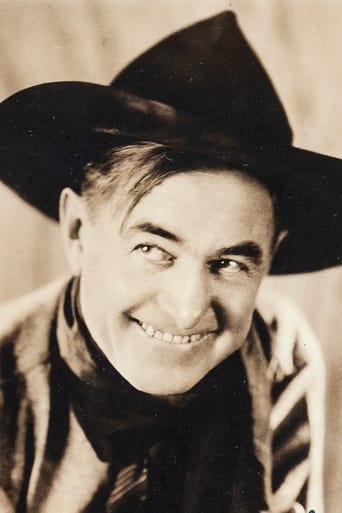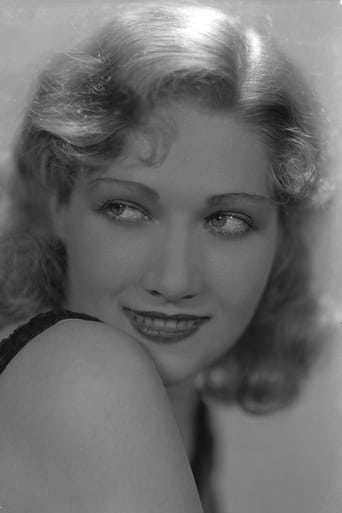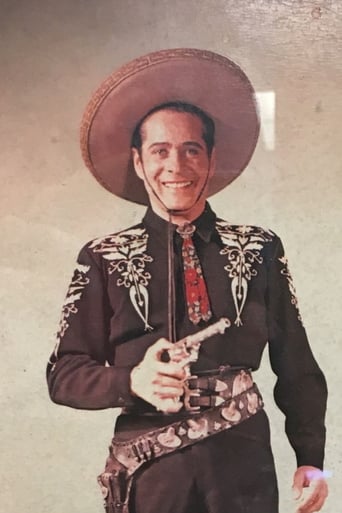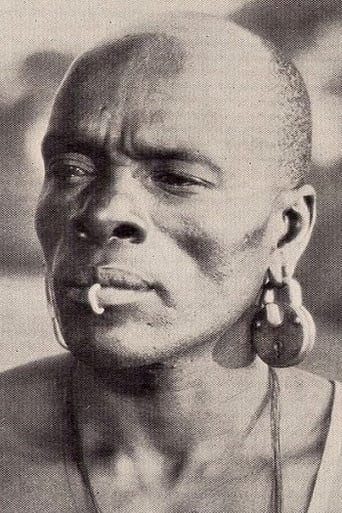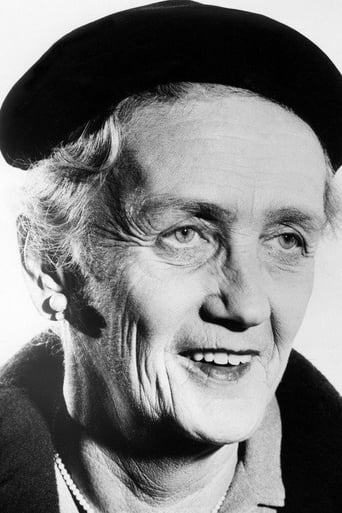WasAnnon
Slow pace in the most part of the movie.
Exoticalot
People are voting emotionally.
Curapedi
I cannot think of one single thing that I would change about this film. The acting is incomparable, the directing deft, and the writing poignantly brilliant.
FirstWitch
A movie that not only functions as a solid scarefest but a razor-sharp satire.
Robert J. Maxwell
W. S. ("One-Take Woody") Van Dyke assembled one of those movies about two intrepid white men (Carey and Renaldo) trekking through the bush in search of a lost missionary's daughter. Whether or not they find her, and under what circumstances, I leave to the viewer's guess. Carey is the savvy white explorer and Renaldo is the handsome young novice, whom Carey calls "Laddie." It's not as racist as one might expect from a 1931 movie, and much of the spectacular footage was shot in Kenya and the Congo. The movie takes a reasonably sensible attitude towards "the beasts" they encounter too, though they chuckled as they shoot and kill crocodiles on the banks of the river. "You just wounded him," chides Carey, good-naturedly. As far as I could tell, they got the names of the beasts right -- gnus vs wildebeests; the black panther being a melanistic leopard -- and the tribal names too -- Masai and Kikuyu. (Remember the Mau Mau? They were mostly Kikuyu.) It had been nine years since "Nanook of the North" made a splash, and this splash is bigger and has stars with names, and they don't look like Nanook and his pals. But it's all old hat by now.The film must have gone over big with audiences in 1931. They got not only rhinoceroses but Duncan Renaldo is a pith helmet the size of a rain barrel and the configuration of a flying saucer.
David_Brown
This is a very strange film. It gets 10 of 10 for the photography and the shot of the cat being killed (That scene did not look staged), but about 1 star for the characters. None of these them really did anything for me (Liked or disliked), and I think it goes back to the actors involved. If MGM would have chosen actors like John Barrymore or Walace Beery instead of Harry Carey as Horn, Gable (Instead of Duncan Renaldo ("The Cisco Kid)) as Peru. Finally, last but certainly not least, Myrna Loy (Who has played unusual characters like Fu Manchu's daughter (Fah Lo See) in the "Mask of Fu Manchu" or Ursula Georgi in "13 Women"), instead of Edwina Booth, although hot to look at (You can actually see her very nice breasts in one scene) she is not Myrna in the acting department. With actors like these (Except Barrymore, all of whom were at MGM at the time), you could have had a classic like "King Kong", instead, you have a disappointment.
bkoganbing
I don't think any film that managed to finish its shooting schedule and be released ever had as much problems as Trader Horn. So much so that for 20 years no American film company ever went back to Africa for location shooting until The African Queen and King Solomon's Mines. But so much footage survived that MGM was able to stock a series of Tarzan films and not put its players at risk the way Harry Carey, Duncan Renaldo and Edwina Booth were.The plot is a skimpy one. Carey is your basic white hunter who is taking along a young friend Renaldo into some unexplored country in search of missionary Olive Carey's daughter. When they find her she's now the princess of a savage tribe. But one look at these two, especially Renaldo, makes her realize there are others who look like her. After that it's the three of them plus Carey's gunbearer on the run from the tribe and without weapons in the jungle.While American companies avoided Africa, colonial powers like Great Britain shot films in Africa and did it because they knew what the hazards were and took precautions. The goring of a young native by a rhinoceros is real and captured on film and frightening. Director Woody Van Dyke kept his cast and crew loaded with gin and quinine. It still did not save Edwina Booth from a rare tropical disease which many thought killed her. I've always believed that was a deliberate publicity stunt by MGM because Ms. Booth was through with show business after this shoot. Who could blame her?The first half of the film is a travelogue on safari. At the time this was great stuff for the American movie-going public. Still no studio wanted to face the expenses MGM had during Trader Horn's shooting.
tjonasgreen
The comments of Ron Oliver and marcslope are interesting and informative and yet what occurs to me is that this antique with all its racist assumptions about the violence and mystery of 'the dark continent' is a relic of late 19th-century Boys' Adventure fiction. These stories by H. Rider Haggard and Edgar Rice Burroughs (as well as dozens of others now forgotten) seem to have had a surprising and lasting life in early talking pictures: TARZAN, THE GREEN GODDESS, SHE and countless serials all featured these mythic adventurers, forgotten white gods and goddesses and black 'savages,' both noble and blood-thirsty. Seeing TRADER HORN reveals that it was among the first and most influential of these movies, so it's unfortunate that it is so little known today.That's no doubt due to its casual racism as well as the pre-code nudity on the part of the African women filmed on location. But TRADER HORN's naiveté and breath-taking political incorrectness make it a rather fascinating primitive. There are other marks against it: an overlong running time, too-leisurely pacing, wild-life photography that is often dull or (in the case of the slaughter of a rhino and a lion) sickening.But on the plus side: Harry Carey's direct, natural and gruff performance has been noted by others. I was far more interested in Duncan Renaldo and Edwina Booth. Renaldo was so personable and extraordinarily handsome -- he looked like a prettier Don Ameche and from certain angles seems a dead ringer for a black-haired Brad Pitt -- that I was astonished to have never heard of him. He was certainly no great actor, and yet he had a definite physical presence and was highly photogenic. His Hispanic accent must have been the primary impediment to a career in 'A' pictures. The (in some ways) legendary Edwina Booth turns out to have had a strong facial resemblance to Marlene Dietrich, and like Dietrich she's not a very expressive actress. And yet she throws herself wholeheartedly into her portrait of a wild, willful and childish White Goddess, spitting out all of her dialog in unintelligible movie African. It's camp for sure, but also a gutsy performance.And the scene in which Carey and Renaldo first meet Booth is memorable: after appearing in their hut wearing only a monkey fur bikini (and showing the kind of long, lean, cut body that contemporary taste demands) she proceeds to have a shrieking tantrum while flogging every African in sight. When confronted by the gorgeous Renaldo, she proceeds to whip him as well (in a scene that obviously inspired a similar one in Clara Bow's CALL HER SAVAGE a year later) while he simply smolders and hardens and she becomes aroused. It is a provocative scene of real sexual tension and something of a revelation.A bigger one is the fact that in plot and iconography TRADER HORN was an obvious influence on the far more famous and evocative KING KONG. Having grown up with Kong and Fay Wray I was shocked to be watching TRADER HORN for the first time only to note that Carey begot Robert Armstrong as Booth begot Fay Wray and Renaldo begot Bruce Cabot. Such are the random ways that imitation can sometimes unintentionally inspire great folk art.

